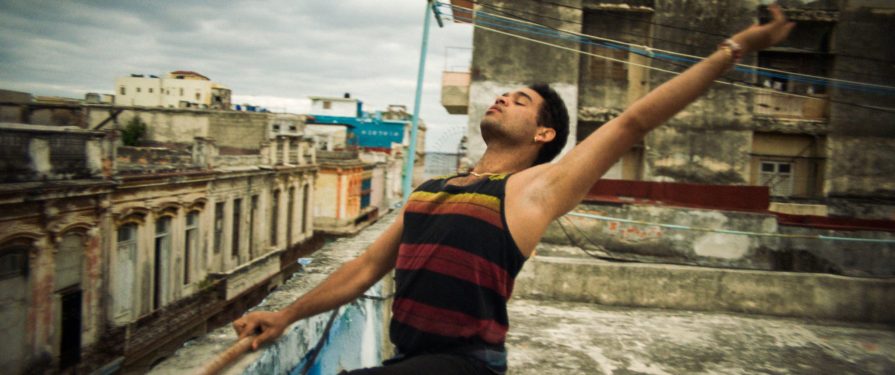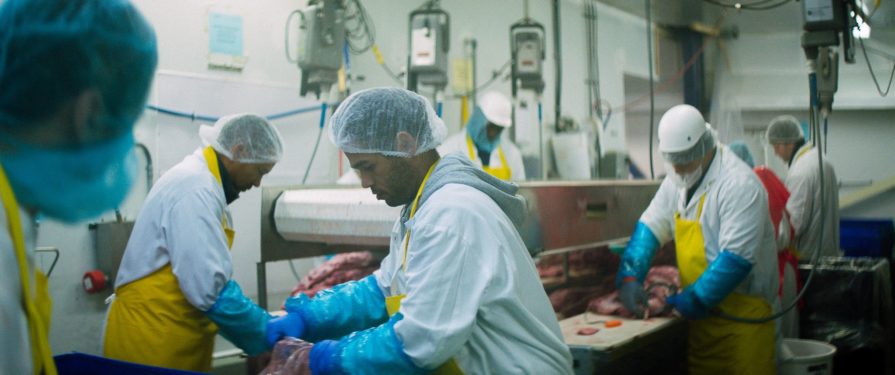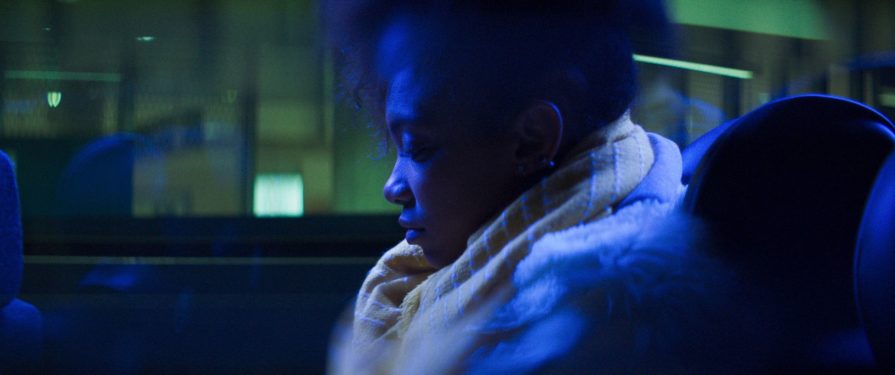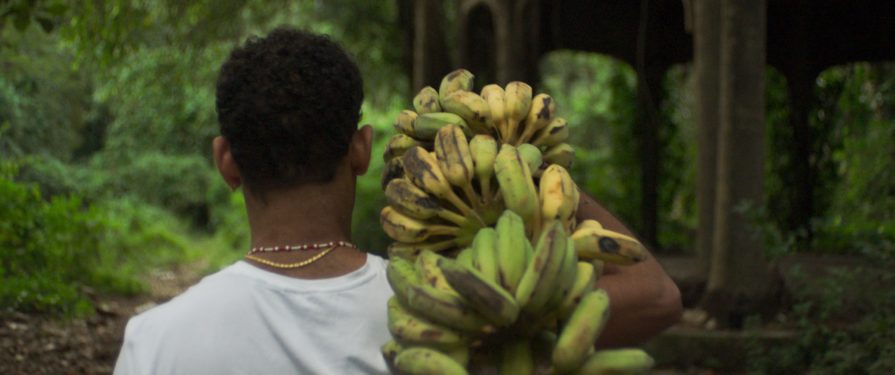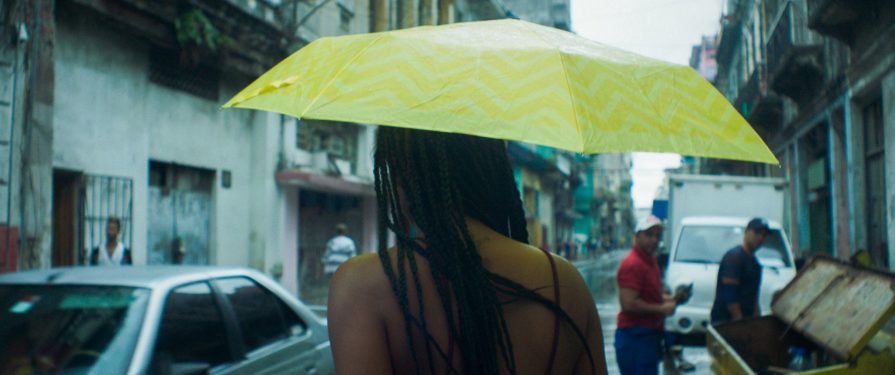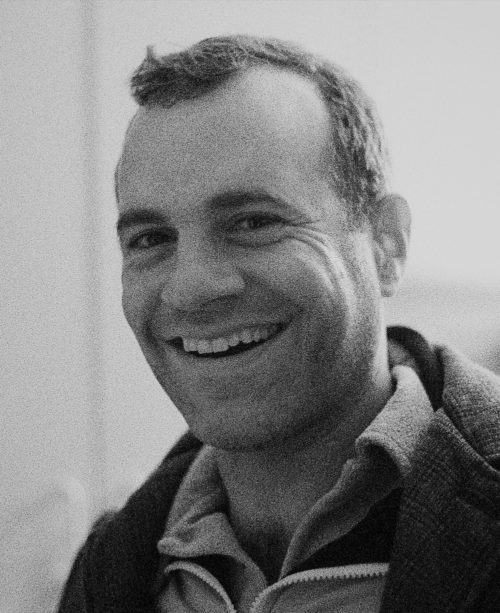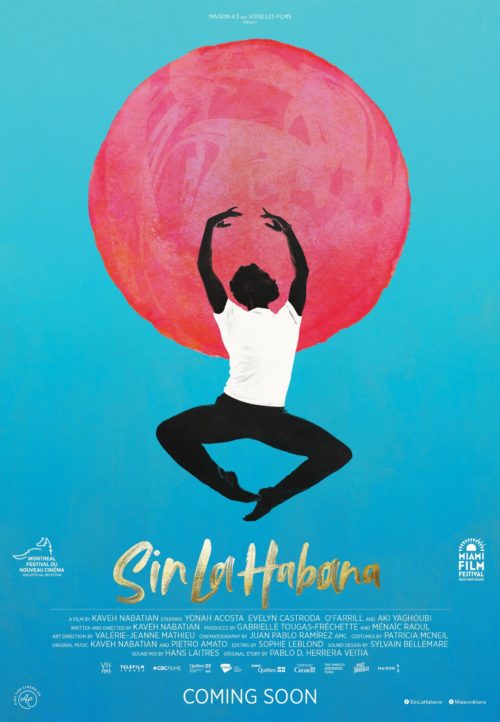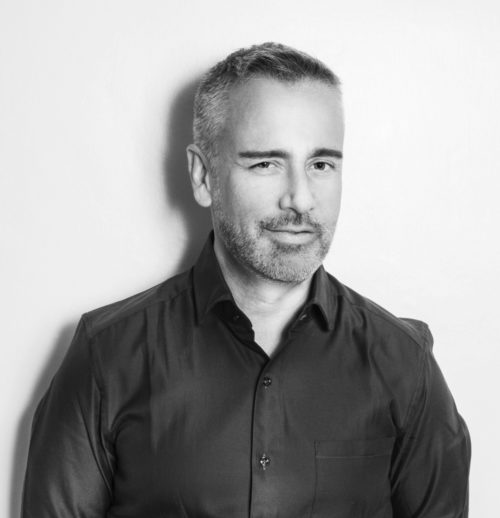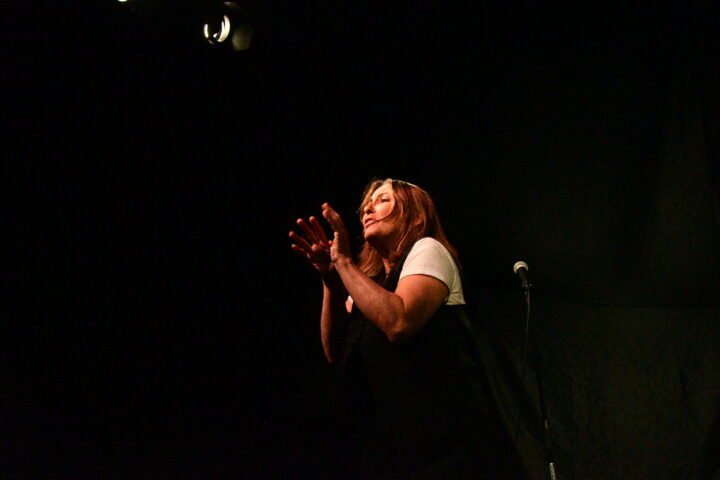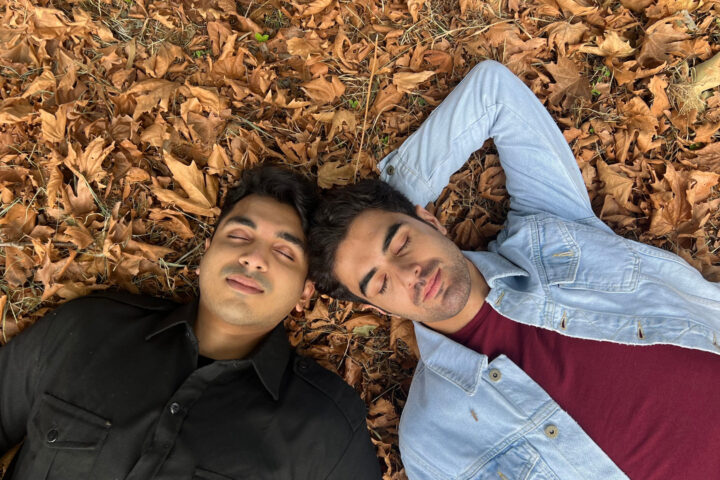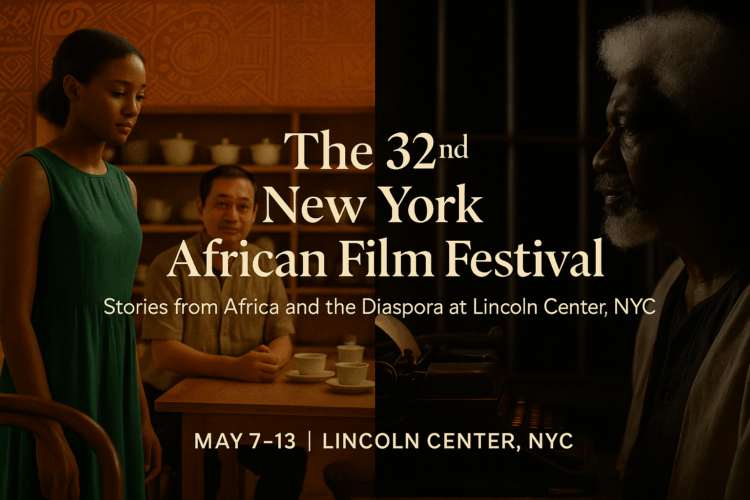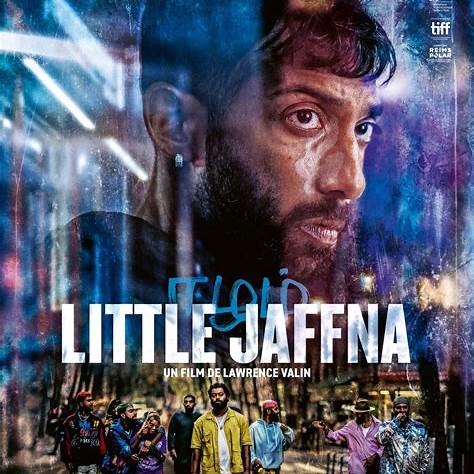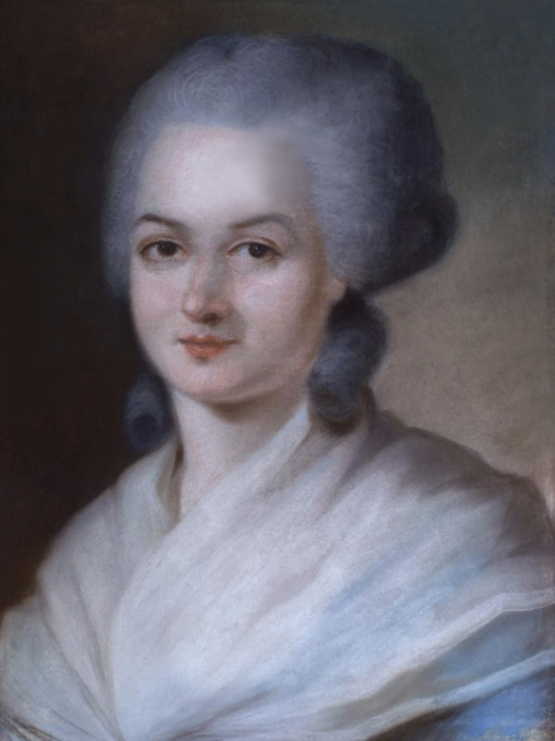Sin La Habana
Directed by Kevah Nabatian, Sin La Habana [1] is a film raising many uncomfortable questions about immigration. This Cuban-Canadian feature film was awarded “Le Prix de la Distribution” (casting) at the “Festival du Nouveau Cinéma de Montréal” and was presented at the 38th Miami Film Festival at the beginning of this year.
The story
Leonardo is a young, handsome, gifted Cuban ballet dancer who is frustrated by the glass ceiling he comes up against in his home country; he is convinced that his Afro-Caribbean origins hinder his career. His partner Sara is no better off despite being an ambitious lawyer, and she seems determined to leave the island and move to the West for a better future. She manages to persuade her boyfriend to seduce a Canadian tourist, hoping that this plot will get him to Montreal, a great city for Leonardo to realise his ambition – Montreal being internationally renowned for its dynamic art scene, including the Canadian ballets.
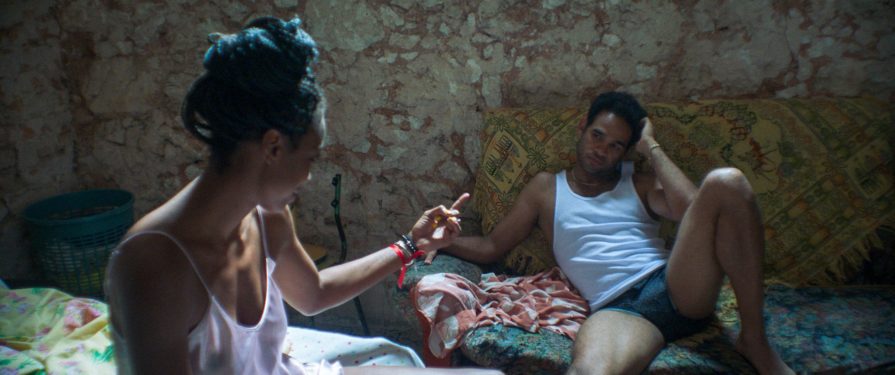 Sara (Evelyn Castroda O'Farrill) & Leo (Yonah Acosta)
Sara (Evelyn Castroda O'Farrill) & Leo (Yonah Acosta)
The victim of this scam is a Montrealer woman of Iranian descent and Jewish faith. Nasim is a kind person, and seems to be the ideal target for Leonardo, though behind her sweet and naïve appearance hides a rebellious woman who refuses to submit to a patriarchal system. Nasim chooses her own destiny; she is not the dupe we at first assume.
Immigration is no piece of cake and we watch Leonardo struggle in Montreal. Integration is difficult and his ego takes a hit. Often the migrant feels belittled; he works long hours at a thankless, low-paid job, struggling to save enough to fulfill his promise and arrange a fake marriage to get Sara out of Cuba. And when Sara finally arrives, things will get even more complicated… three has never been an ideal number for a successful marriage.
Immigration
Thus we witness how immigration can turn out to be a source of stress and disappointment. Every immigrant hopes that moving to a new country will resolve long-lasting problems. Yet often, many frustrations in life are related to our own failings and not to the environment in which we live. Furthermore, in their new home, immigrants may well find hard-earned qualifications from their native country being downgraded or not recognised at all. Their knowledge and skills could likewise be differently assessed and appreciated. All too often, they will need to start again from scratch. Either they must adapt and put aside their ego or risk failure and a return to their native country should they become too discouraged by such overwhelming challenges.
Having worked for a few years for Quebec immigration, it seems to me there is a certain fairness in the process: most of the immigrants with a positive attitude, who work hard and feel gratitude to their new country, achieve their goal after three or four years of residency. Whereas newcomers who are negative and show contempt for Quebec culture end up leaving Montreal within a couple of years. In Sin La Habana, we see Leonardo working illegally and being paid five dollars an hour in a meat processing factory while Sara, the Cuban lawyer, serves at the counter of an independent, local café. Sara, though fluent in English, still has to learn French to find work as a lawyer. One cannot help wondering if it would have been wiser to have stayed in La Habana…
Homesickness
Climate is another major challenge for immigrants to Canada: the continental climate for some, polar weather for others. Montrealers have to endure six long wintry months where snow, freezing rain, slush (greyish melting mud consisting of snow and dust) and slippery pavements are the norm. It can feel like wearing full body armour, weighed down by large boots, multiple layers of clothing, wool scarves, gloves and hats! It might be fun during the first month but the novelty wears off come March, leaving people physically and psychologically exhausted. They might end up cursing the bloody snow, far away from the beautiful white sandy beaches of the Caribbean or the elegant European capitals with their comparatively mild climate.
Once in Canada, many immigrants succumb to a strange feeling of isolation due to the immensity of the landscape. The low population density, the brutal cold, the large monochromatic Plaines and the remote horizon could give rise to or exacerbate a feeling of loneliness or homesickness. Even in Montreal, the second largest city in Canada, this feeling of emptiness can set in. The flashback technique used in the film accentuates the contrast between lively tropical scenes in La Habana and the quietness of the snow in Montreal’s large avenues.
Nevertheless, Canada certainly remains a safe haven for people escaping oppressive regimes. It may well be the ideal destination for individuals who can no longer put up with elitism, snobbery, sexism, racism and corruption. Canada is a good example of a meritocracy where tolerance, respect and social welfare are the norm.
Community
It is a well known fact that people tend to gather with folks from the same cultural background. The Cuban connection in Montreal will be of great use for Leonardo, especially for work and favours. But for his new Canadian wife, things are quite different. Nasim does her best to avoid her own close-knit community for her own reasons; the Iranian Sephardi community is far too conservative for her. The day she introduces Leonardo to her family, her father makes shocking racist comments, thus revealing the hypocrisy found among many migrants. We assume that despite Nasim’s father having been granted residency or asylum in Canada - probably for having suffered discrimination or persecution in Iran for being Jewish – he nonetheless rejects Canadian values of diversity and gender equality.
Despite experiencing discrimination abroad, Cubans themselves are not above reproach. Syrian-Lebanese migrants who settled throughout Latin America in the 19th and 20th centuries are still referred to as “Los Turcos [2]” in spite of being Arab. Moreover, Cubans seem unable to distinguish differences between Iranians, Arabs and Turks despite them being three totally distinct cultures.
Cuba
In Sin La Habana, criticism of the Castro Regime is very subtle, or even missing altogether. Leonardo wants to leave Cuba for professional reasons; he believes his skin colour limits his artistic career [3]. But this is only Leonardo’s perception. We don’t know for sure whether or not racism is deeply rooted in Cuban institutions. Some say that the Castro regime is exclusively led by white revolutionary men, but one cannot deny that the Revolution has helped Afro-Cuban people gain access to both education and health.
Throughout the film, you hear a Cuban musical rhythm, especially during Afro-Cuban spiritual scenes where there is a slightly blurry light, probably to differentiate the two worlds: the spiritual from the everyday. Leonardo believes in the forces of the Shango and throughout his Canadian adventure, he always keeps in mind the advice given to him by a sorcerer. He draws on this power to cope with setbacks, enabling him to persevere and never give up on his dream.
Notes from the author
[1] “Without Habana”
[2] It is said that the expression ”Los Turcos” dates back from La Belle Époque when Lebanese and Syrian migrants arrived in great numbers in Latin America with an Ottoman passport; Lebanon and Syria being part of the Ottoman Empire.
[3] I read once that in 1898, at the end of the war between Spain and the United States, some American politicians backed the idea of Cuba’s annexation to the US, as happened with Puerto Rico. But the project was abandoned because too many Americans were opposed to a predominantly black nation.

